NORTH and WEST SIKKIM
Tour - 14 days
About Darjeeling & SIKKIM
Sikkim and neighboring Darjeeling have a lot to offer to mountain lovers, aficionados of Buddhist culture and trekkers. Wedged in between Nepal, Bhutan and Tibet – but part of India – this region shares a lot with these areas.
Darjeeling, situated at 2040m, has the typical atmosphere of Indian hill stations. It was the former summer capital of British India, and has preserved much of the old-world charm. Darjeeling is world-famous for its tea, which is grown in extensive tea estates that clad the surrounding slopes. Being very close to the tallest mountains on earth, especially number 3, the Kangchenjunga (8586m) it also boasts great views from most hotel windows.
It’s next-door neighbour Sikkim – of which it used to be part – is a gem of cultural and natural diversity. Until 1974 Sikkim was an independent kingdom, now it is part of India. It is home to different Himalayan peoples, most from Nepali descent or originating from Tibetan and Bhutan, such as the Bhutias who brought Buddhism to the area four centuries ago. Thanks to them Sikkim boasts of colorful Buddhist monasteries and Buddhist festivals. The Lepcha’s, until a few decennia ago forest-dwelling animists, hold a unique culture that the Sikkimese government is trying to preserve.
Read more…Read less…
Region
Darjeeling & Sikkim
(India)
Best Time
March-April &
Oct-Dec
No. Of Days
14 days
Trip Character
Jeep tour
Sleeping Altitude
1620 - 2625 m
Price
INR XXX/ $ XXX
ABOUT THIS TOUR
On this tour, you’ll fly from Delhi to Bagdogra, south of Sikkim, from where you’ll be driven to gangtok, Sikkim’s capital. After two nights here, to rest from the journey and get acclimatised to the altitude, the bicycle tour starts.
On the first leg of the tour, you’ll explore the ‘monastic circuit of western Sikkim, visiting the most interesting and precious buddhist temples and monasteries of Sikkim, as well as its diverse people and mountains and its fascinating flora and fauna. Where possible, you follow remote roads, avoiding dense traffic routes, that wind their way through the lush countryside and forests. Occasionally you will get very good views of the Khangchenjunga (8485 m) and other Himalayan peaks.
On the second leg you’ll explore the most northern parts of Sikkim. You’ll bicycle up along the raging Teesta River and explore small settlements along its headwaters, inside the Kangchenjunga National park. Even further north, you’ll visit the Bhutia settlements of Lachen and Lachung, situted at about 2600m. From here you’ll explore the highest attainable valleys of Sikkim, close to the border with Tibet/ China and home to yak herders and ancient, tiny gompa’s that figure in the early twentieth century travel stories by legendary explorers such as Alexandra David-Neel and Lama Anagarika Govinda.
Your accommodation is a mix of pleasant homestays, ‘different’ ecoresorts and comfortable hotels.
YOUR custom-made TRIP
The tour described here, as well as the other ones on our website, are mainly meant as suggestions. We would be happy to offer you a travel proposal that fully meets your personal demands and expectations. That means that you choose where you want to go, what level of accommodation and type of transport you want and what activities you prefer.
Please let yourself be inspired by this and other trips on our website and then drop us a line (or call us) to explain your travel wishes. We will be happy to help you put together the perfect trip. You can reach us over e-mail, Messenger, Whatsapp or mobile phone.
EXTENSIONS & VARIATIONS
Apart from the tour as described here, you could consider the following add-ons and changes:
- Stay longer in Gangtok or one of the smaller hamlets that you pass through on the way. Gangtok has a lot to offer in terms of local sights, such as monasteries and temples, handicraft markets, shopping and pleasant cafes. The smaller places, such as Kewzing, Yuksum, Lachen and Lachung is where you can meet the locals and learn about their culture.
- Add a walking trek to your programme to get even higher into the Himalayas and enjoy stupendous vistas of Mt. Kangchenjunga. We highly recommend the Shingalila Ridge trek.
ITINERARY
-
Day 1: Delhi ✈︎ Bagdogra or Pakyong Aiport & drive to Gangtok (4 h, or 1 h drive, resp.)
The flight to Bagdogra takes less than 2 h and, in clear weather, affords wonderful views of the Himalayas, including Mt. Everest (8848m) and Kangchenjunga (8568m). At the airport our guide and driver await you, and will take you to Gangtok, Sikkim's Capital. Overnight in a good hotel. Altitude 1650m. -
Day 2: In Gangtok
Today you can explore Gangtok, by car and on foot. You can visit the Sikkim Research Institute of Tibetology, the Do Drul Chorten, the largest stupa in Sikkim, the Cottage Industries Center, the Flower Show and Enchey Monastery. Altitude 1650m. -
Day 3: Gangtok – Rumtek (45 min)
Leaving Gangtok to the west, you descend to the river Rani Khola, after which you reach the forested mountain slopes around Rumtek, the site of Gangtok's most famous monastery, Rumtek Gompa. Altitude 1650 → 1620m. -
Day 4: Rumtek - Kewzing (85 km/ 3 h)
Today, you’ll follow a backroad along small hamlets down to the Teesta River and up again to the small hamlet of Kewzing. On the way you can visit Temi Tea Gardens and a 40m high statue of the Buddha Gautama at Ravangla. Overnight in a pleasant homestay. Altitude 1650 → 350 → 2045 → 1615m. -
Day 5 : Kewzing - Pelling - Kecheopalri - Yuksum (91 km/ 4 h)
First, you visit Pelling, home to Sikkim’s most revered monastery, Pemayangtse Gompa, and after that the beautiful Khechopari Lake. Overnight is at Yuksum, the ancient capital of Sikkim. 1615 → 2070 → 1160 → 1825 → 1105 → 1730m. -
Day 6: Yuksom - Tashiding Monastery - Mangan (126 km/ 4-5h)
Today you’ll visit spectacularly situated Tashiding Monastery. After passing Kewzing and Ravangla, and crossing the Teesta River again, you follow a much less travel road north to Mangan. Altitude 1730 → 1605 → 655 → 2035 → 460 → 1250mm. -
Day 7: Mangan - Sakkyong (23.5 km/ 1h)
Today, you''ll leave the main road and explore a less visited valley to the west. It's a relatively short distance to the simple homestay up in Sakkyong Valley. After lunch you'll walk further west and explore the fringes of the Kangchenjunga National Park. Altitude 1250 → 750→ 1450m. -
Day 8: Sakkyong - Chumthang - Lachen (78 km/ 3h)
You leave this beautiful valley again and rejoin the main road at Mangan. Continuing north along the Teesta River, you pass the small town of Chumthang and enter the wide Lachen Valley, one of the two major acces routes to the borderlands with Tibet. Altitude 1450 → 750 → 1620 → 2620m. -
Day 9: Lachen - Thangu - Lachen (105 km/ 5 h)
A long day with a very serious altitude gain., so you may want to ride the car for at least a part of it. You'll follow one of the main access routes to the high Himalayas on the border with Tibet/ China, a magnificent area of glaciers, forbidding mountains and green valleys where yaks graze. Altitude 1620 → 5015 → 2620m. -
Day 10: Lachen - Lachung (81,5 km/ 3 h)
You return to Chumthang, where you turn east. Climbing up another valley you’ll reach the pleasant settlement of Lachung. Altitude 2620 → 1620 → 2625m. -
Day 11: Lachung - Zero Point - Lachung (117 km/ 4 h)
Today we explore the desolate, high-altitude valley north of Lachung. The landscape is shaped by glaciers, raging mountain streams, snow-capped mountains and forests that harbour silver fir and juniper, as well as more than twenty species of rhododendrons (blooming in April). Altitude 2625 → 4815 → 2625m. -
Day 12: Lachung - Milky Waterfall - Lachung (74 km/ 2.5 h)
In the morning you can visit the interesting Lachung Gompa (temple) before driving up to Milky Waterfall at about 4000m. Here you can explore some magnificent high altitude forests.Altitude 2625 → 4060 → 2625m. -
Day 13: Lachung - Gangtok (104 km/ 4 h)
You return to Mangan and then follow the main, eastern road back to Gangtok, stopping at wonderful viewpoints and the interesting monastery of Phodong. Altitude 2625 → 750 → 940 → 585→ 1650m. -
Day 14: Gangtok - Bagdogra ✈︎ Delhi (4 h drive, 2 h flight)
After breakfast the car will take you down to Bagdogra where you check in for the flight to Delhi. It depends on the timing of your international flight whether you will need an overnight stay in Delhi. In the latter case we can arrange this for you.
HIGHLIGHTS OF THIS TOUR
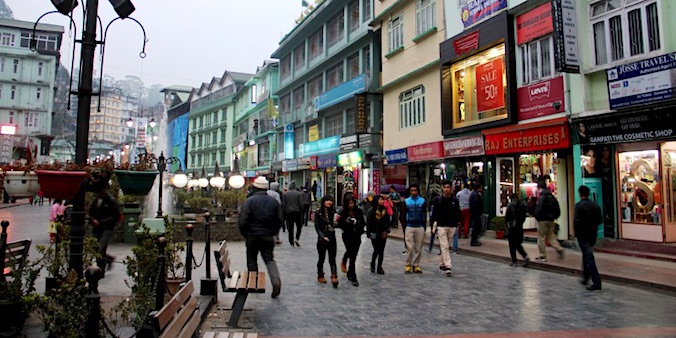
Gangtok
Rumtek Monastery
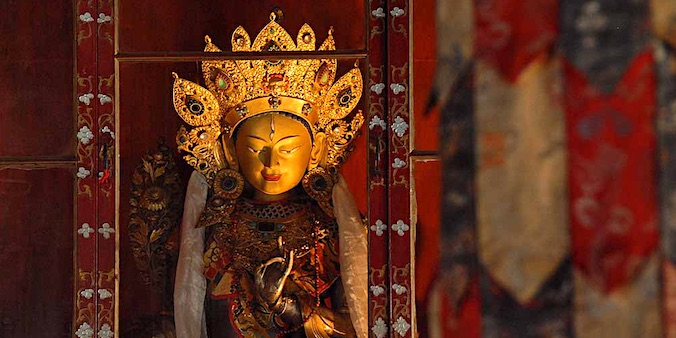
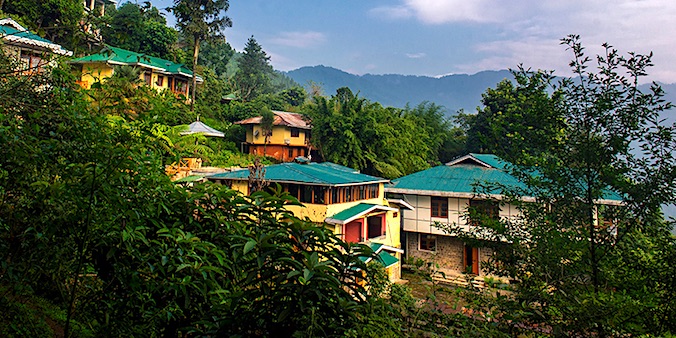
Teen Taley Eco Resort
SIKKIM Tea

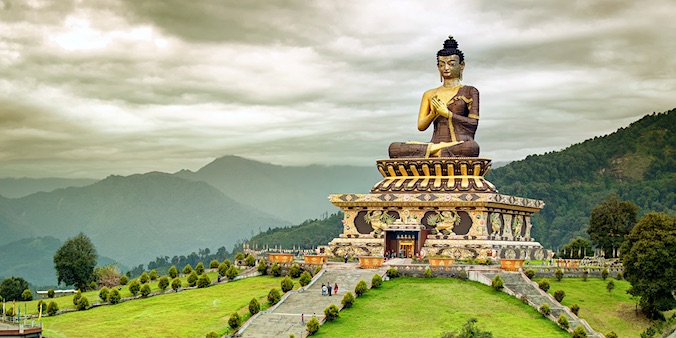
Ravangla
The Lepchas

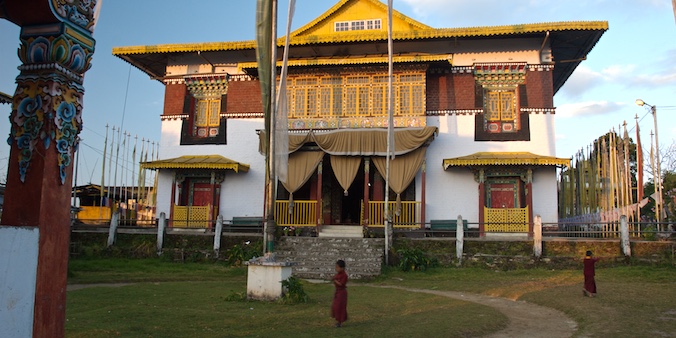
Pemayangtse Monastery
Yuksum
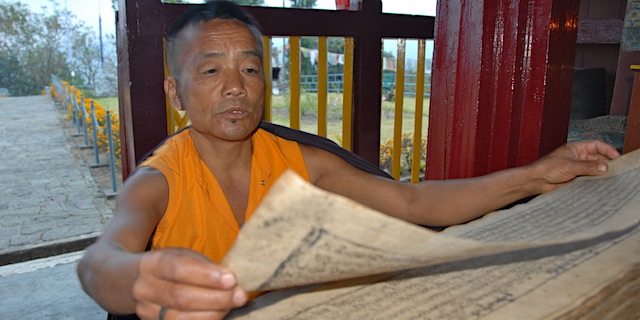
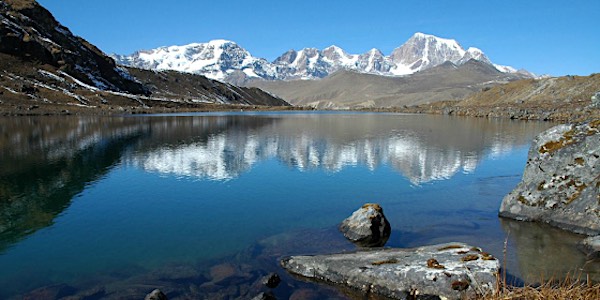
Lachen and Lachung
THE BHUTIAS




